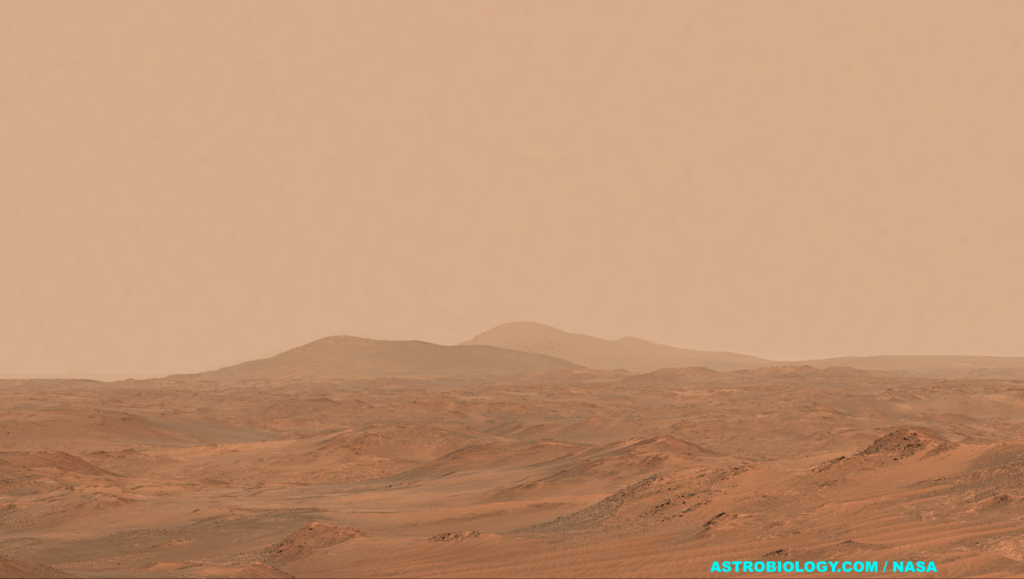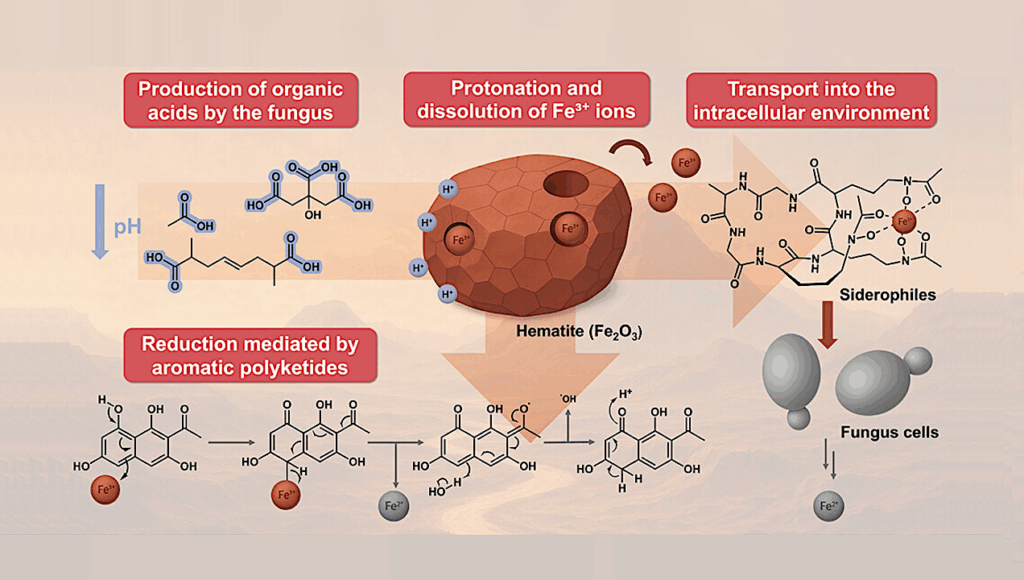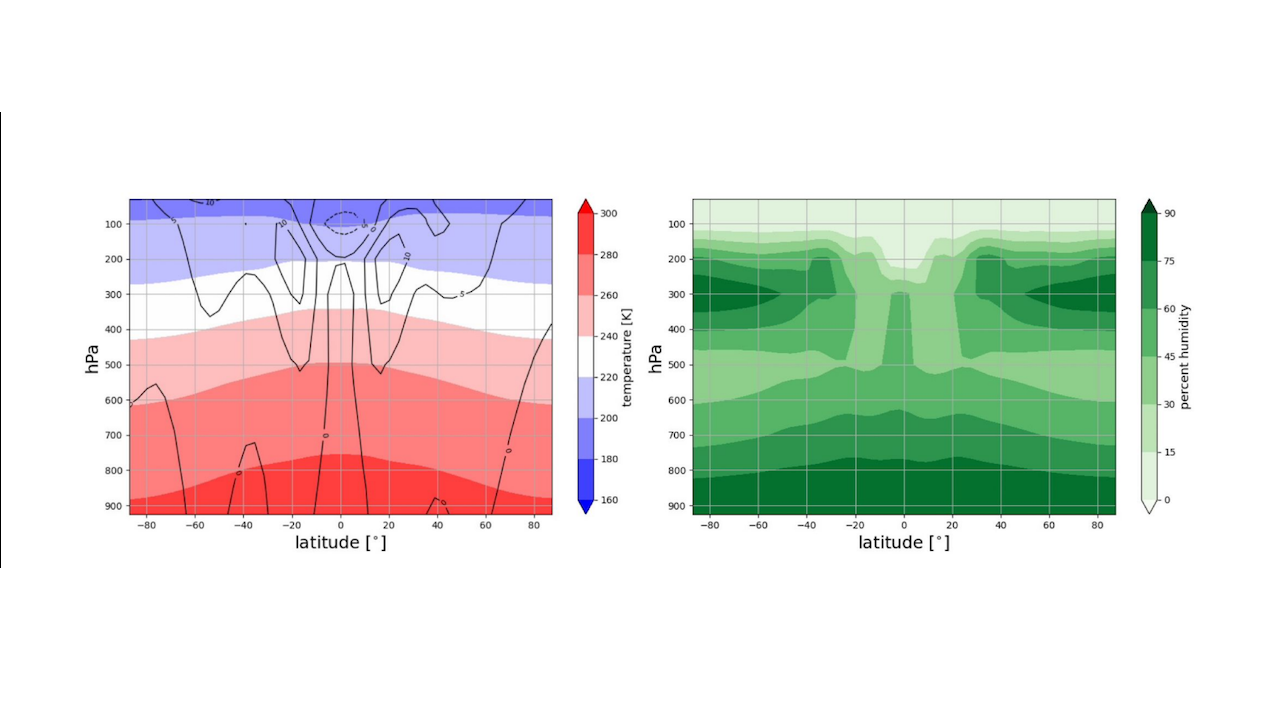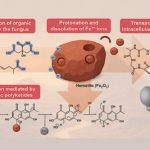Now Reading: Chemistry, Climate, And Transmission Spectra Of TRAPPIST-1 e Explored With A Multimodel Sparse Sampled Ensemble
-
01
Chemistry, Climate, And Transmission Spectra Of TRAPPIST-1 e Explored With A Multimodel Sparse Sampled Ensemble
Chemistry, Climate, And Transmission Spectra Of TRAPPIST-1 e Explored With A Multimodel Sparse Sampled Ensemble
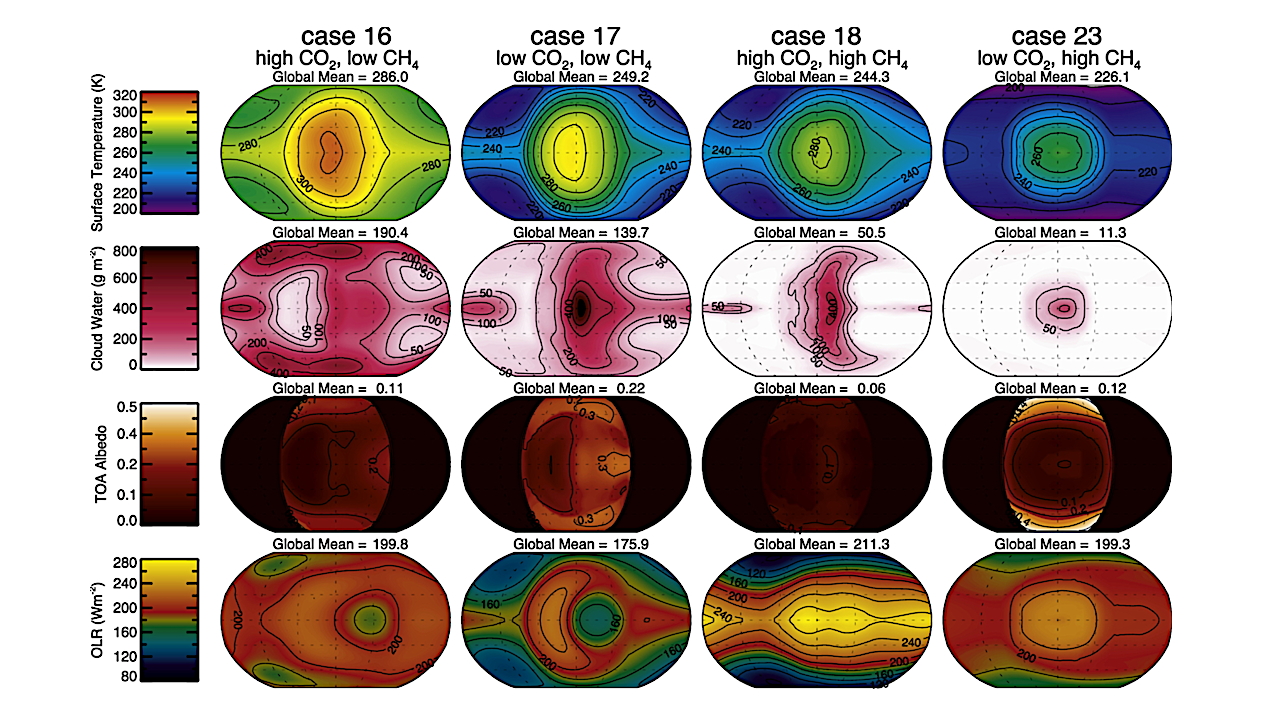

Contour plots of surface temperature, cloud water column, albedo, and OLR for our four representative climate states. — Planetary Science Journal
TRAPPIST-1 e is one of a few habitable zone exoplanets that is amenable to characterization in the near term. In this study our motivations are both scientific and technical.
Our technical goal is to establish a multimodel sparse sampled ensemble approach for coherently exploring large unconstrained parameter spaces typical in exoplanet science. Our science goal is to determine relationships that connect observations to the underlying climate across a large parameter space of atmospheric compositions for TRAPPIST-1 e.
We consider atmospheric compositions of N2, CO2, CH4, and H2O, with water clouds and photochemical hazes. We use a 1D photochemical model, a 3D climate model, and a transmission spectral model, filtered through a quasi−Monte Carlo sparse sampling approach applied across atmospheric compositions. While clouds and hazes have significant effects on the transmission spectra, CO2 and CH4 can be potentially detected in ≤10 transits for certain compositional and climate states.
Colder climates have better prospects for characterization, due to being relatively dry and having fewer clouds, permitting transmission observations to probe more deeply into their atmospheres. CH4 volume mixing ratios of ≥10−3 trigger strong antigreenhouse cooling, where near-IR absorption simultaneously creates an inversion in the stratosphere and reduces the stellar radiation reaching the planet surface.
In such cases, interpreting the disk-averaged emission and albedo at face value can yield misleading conclusions, as here low albedo and high thermal emission are associated with cold planets. Future work will use our sparse sampling approach to explore broader parameter spaces and other observationally amenable exoplanets.
Eric T. Wolf et al. 2025 PSJ 6:231
Chemistry, Climate, and Transmission Spectra of TRAPPIST-1 e Explored, Planetary Science Journal (open access)
Astrobiology,
Stay Informed With the Latest & Most Important News
-
 01From Polymerization-Enabled Folding and Assembly to Chemical Evolution: Key Processes for Emergence of Functional Polymers in the Origin of Life
01From Polymerization-Enabled Folding and Assembly to Chemical Evolution: Key Processes for Emergence of Functional Polymers in the Origin of Life -
 02Panasonic Leica Summilux DG 15mm f/1.7 ASPH review
02Panasonic Leica Summilux DG 15mm f/1.7 ASPH review -
 03How New NASA, India Earth Satellite NISAR Will See Earth
03How New NASA, India Earth Satellite NISAR Will See Earth -
 04And Thus Begins A New Year For Life On Earth
04And Thus Begins A New Year For Life On Earth -
 05Astronomy Activation Ambassadors: A New Era
05Astronomy Activation Ambassadors: A New Era -
06SpaceX launch surge helps set new global launch record in 2024
-
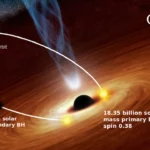 07Two Black Holes Observed Circling Each Other for the First Time
07Two Black Holes Observed Circling Each Other for the First Time













